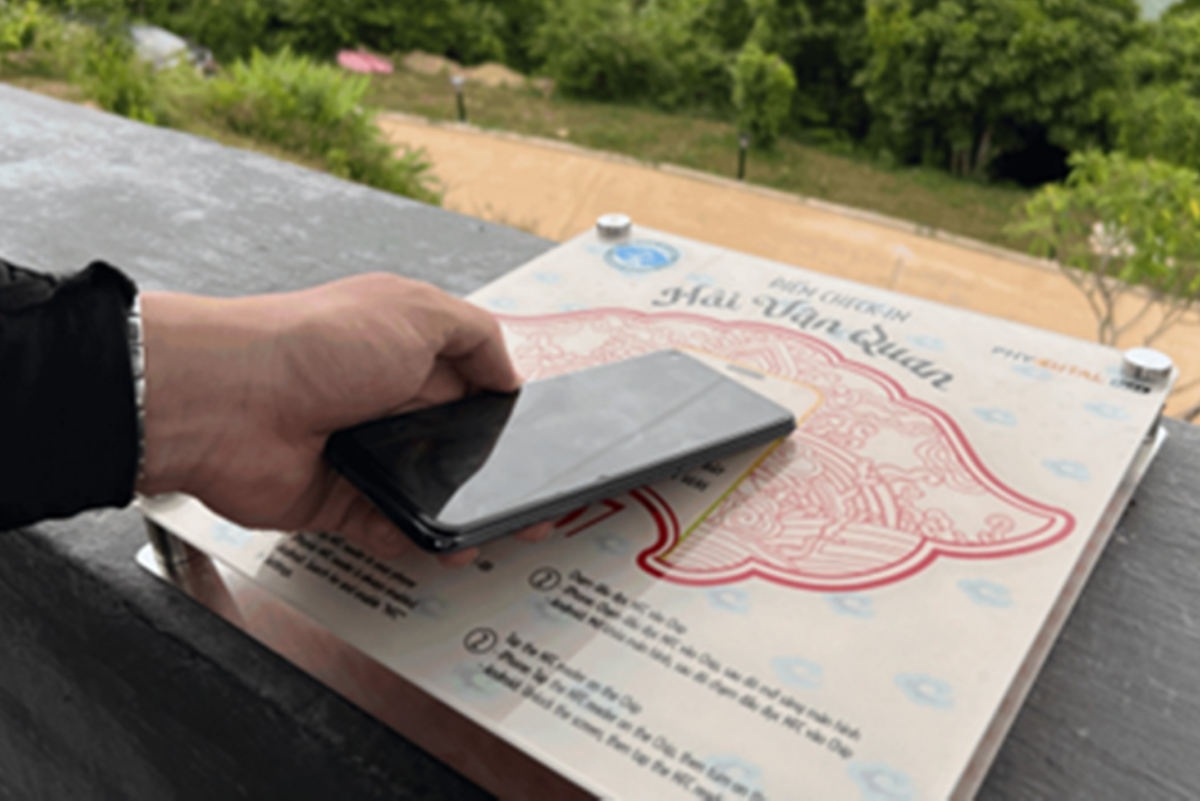
Recently, when visiting The Imperial City of Hue and Hai Van Pass Scenic Lookout, tourists might be surprised to find they just need to touch their smartphones on a small board to explore everything about attractions, and save their images and leave their names.
This was a pioneering step and a strong commitment to digitize by the Hue Monuments Conservation Center, which decided to use smart interaction stations (Tap Quest) at cultural tourism sites.
Smart interaction stations are physical boards equipped with NFC (Near Field Communication) chips. Tourists can "tap" their phones at the boards to connect with the historical and cultural stories of each site, depicted through various forms, including images, videos, 3D models, text, or AI-based guides.
Each smart interaction station functions as a "digital tour guide," offering convenience and support for tourists.
These stations are interconnected for an uninterrupted experience, forming a cultural and heritage experience map, highly customizable with unlimited development potential.
At each location, tourists are provided with information about travel itineraries and guided to the next attractions. The ability to take check-in photos and upload personal images to the “honor board” of each site is also a favorite feature. It allows tourists to "engrave their names on the digital wall" of each location without affecting the aesthetics of the monuments and helps promote the tourism sites.
Also, tourists can engage in interesting tasks to gain attractive rewards.
In September 2024, the smart interaction station technology was piloted at Hai Van Pass when it reopened to visitors after the restoration of Hue and Da Nang.
Dubbed " The World’s Most Marvelous Wonder," this location attracts many tourists, both domestic and international.
Even though it is just a pilot project, and not yet widely marketed, this technology has already demonstrated significant potential at the site.
After just over two months of installation, the stations attracted over 5,600 interactions and welcomed hundreds of images with exciting responses from thousands of tourists.
Following this success, in mid-November 2024, the technology continued to be implemented at The Imperial City of Hue, in time for the opening of the Thai Hoa Palace to visitors after three years of renovation.
Just after two weeks opening, nearly 3,800 visitors interacted with the smart interaction stations there.
The new technology will be further developed by the Hue Monuments Conservation Center and the solution provider, Phygital Labs, specifically for Hue culture and heritage sites.
Le My